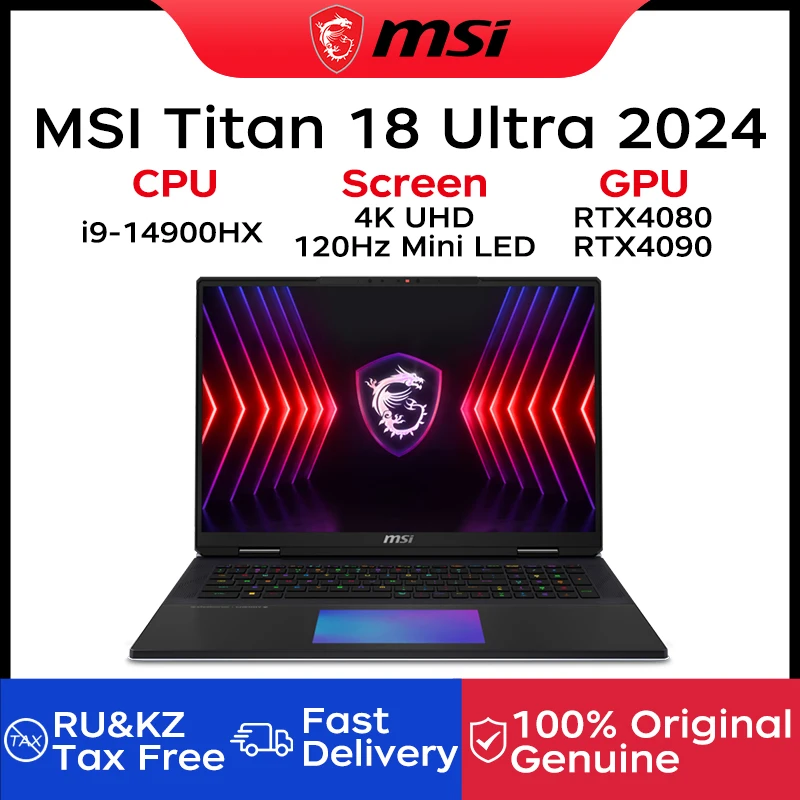Categories
Sponsored
Todays Deal

The digital age has brought about a seismic shift in the way we shop, driven largely by technological advancements that have transformed the online shopping experience. From artificial intelligence and augmented reality to blockchain and big data, technology is continually evolving, creating a more seamless, personalized, and secure shopping experience for consumers. This comprehensive guide explores how technology is revolutionizing the online shopping experience and reshaping the future of retail.
Artificial Intelligence (AI) and Machine Learning
Personalized Shopping Experiences
Artificial intelligence (AI) and machine learning are at the forefront of the technological revolution in online shopping. These technologies enable e-commerce platforms to provide highly personalized shopping experiences by analyzing consumer behavior and preferences.
- Benefit: Personalized Recommendations
- AI algorithms analyze browsing history, purchase patterns, and user preferences to offer personalized product recommendations, increasing the likelihood of purchase and enhancing customer satisfaction.
- Machine learning models continuously improve these recommendations by learning from user interactions and feedback, creating a dynamic and tailored shopping experience.
- Examples: Amazon’s recommendation engine, Netflix’s personalized content suggestions.
- Benefit: Chatbots and Virtual Assistants
- AI-powered chatbots and virtual assistants provide instant customer support, answering queries, guiding users through the shopping process, and offering personalized suggestions.
- These virtual assistants enhance customer service by being available 24/7, reducing response times, and providing consistent support across various touchpoints.
- Examples: Sephora’s chatbot on Facebook Messenger, H&M’s virtual assistant on their website.
Augmented Reality (AR) and Virtual Reality (VR)
Immersive and Interactive Shopping
Augmented reality (AR) and virtual reality (VR) are transforming the way consumers interact with products online, offering immersive and interactive shopping experiences that bridge the gap between online and in-store shopping.
- Benefit: Virtual Try-Ons
- AR technology enables virtual try-ons for clothing, accessories, and cosmetics, allowing consumers to visualize how products will look on them before making a purchase.
- This feature reduces the uncertainty of online shopping, increases confidence in purchasing decisions, and reduces return rates.
- Examples: Warby Parker’s virtual try-on for glasses, IKEA’s AR app for visualizing furniture in your home.
- Benefit: Virtual Showrooms and Stores
- VR technology creates virtual showrooms and stores where consumers can explore products in a 3D environment, simulating the in-store shopping experience from the comfort of their homes.
- These virtual environments provide an engaging and interactive way to discover and interact with products, enhancing the overall shopping experience.
- Examples: Alibaba’s Buy+ virtual reality shopping experience, Shopify’s AR capabilities for merchants.
Big Data and Analytics
Data-Driven Insights and Decisions
Big data and analytics play a crucial role in understanding consumer behavior, optimizing operations, and enhancing the online shopping experience. By leveraging data, retailers can make informed decisions and tailor their strategies to meet consumer needs.
- Benefit: Customer Insights
- Data analytics tools track and analyze consumer behavior, preferences, and trends, providing valuable insights that help retailers personalize marketing campaigns, product offerings, and customer experiences.
- These insights enable retailers to understand their customers better, anticipate their needs, and create more targeted and effective marketing strategies.
- Examples: Google’s Analytics for e-commerce, Salesforce’s Commerce Cloud for customer insights.
- Benefit: Inventory Management
- Advanced analytics solutions optimize inventory management by predicting demand, tracking stock levels, and identifying trends, ensuring that retailers have the right products available at the right time.
- Efficient inventory management reduces costs, minimizes stockouts and overstock situations, and improves overall operational efficiency.
- Examples: Walmart’s use of big data for inventory optimization, IBM’s AI-powered supply chain solutions.
Blockchain Technology
Enhanced Security and Transparency
Blockchain technology is revolutionizing the online shopping experience by enhancing security, transparency, and trust in e-commerce transactions. By leveraging blockchain, retailers can provide a more secure and transparent shopping environment.
- Benefit: Secure Transactions
- Blockchain’s decentralized and immutable ledger ensures secure and tamper-proof transactions, reducing the risk of fraud and enhancing consumer trust.
- Smart contracts enable automated and secure payment processes, streamlining transactions and reducing the need for intermediaries.
- Examples: Overstock’s use of blockchain for secure payments, IBM’s blockchain solutions for retail.
- Benefit: Supply Chain Transparency
- Blockchain technology provides end-to-end visibility into the supply chain, allowing consumers to trace the origin and journey of products, ensuring authenticity and ethical sourcing.
- This transparency builds consumer trust and confidence in the products they purchase, particularly for items with a high risk of counterfeiting or ethical concerns.
- Examples: Provenance’s blockchain for supply chain transparency, Everledger’s blockchain for tracking the provenance of diamonds.
Mobile Commerce (M-Commerce)
Shopping on the Go
The proliferation of smartphones and mobile devices has given rise to mobile commerce (m-commerce), enabling consumers to shop conveniently from their mobile devices anytime, anywhere.
- Benefit: Mobile-Optimized Websites and Apps
- Retailers are investing in mobile-optimized websites and dedicated apps to provide a seamless shopping experience on smartphones and tablets.
- Features such as mobile-friendly interfaces, easy navigation, and quick loading times enhance the user experience and drive mobile sales.
- Examples: ASOS’s mobile app, Amazon’s mobile shopping app.
- Benefit: Mobile Payment Solutions
- Mobile payment solutions, such as digital wallets (e.g., Apple Pay, Google Pay) and mobile banking apps, provide a convenient and secure way for consumers to complete transactions on their mobile devices.
- These solutions streamline the checkout process, reduce cart abandonment rates, and enhance overall customer satisfaction.
- Examples: Starbucks’ mobile payment app, PayPal’s mobile payment integration.
Voice Commerce
The Rise of Voice-Activated Shopping
Voice commerce is an emerging trend that leverages voice-activated virtual assistants, such as Amazon’s Alexa and Google Assistant, to enable hands-free shopping experiences.
- Benefit: Voice Search and Navigation
- Voice-activated virtual assistants allow consumers to search for products, navigate e-commerce sites, and make purchases using voice commands, providing a convenient and hands-free shopping experience.
- Voice search enhances accessibility for users with disabilities and offers a faster and more intuitive way to interact with online shopping platforms.
- Examples: Shopping with Amazon Alexa, ordering groceries with Google Assistant.
- Benefit: Personalized Voice Assistants
- Virtual assistants use natural language processing (NLP) and AI to understand user preferences and provide personalized recommendations and support.
- These assistants can remember user preferences, offer tailored suggestions, and streamline the shopping process, creating a more engaging and personalized experience.
- Examples: Siri’s integration with Apple Pay, Google’s personalized voice shopping experience.
Internet of Things (IoT)
Connected Devices and Smart Shopping
The Internet of Things (IoT) is creating a network of connected devices that communicate and interact with each other, offering innovative ways to enhance the online shopping experience.
- Benefit: Smart Home Integration
- IoT devices, such as smart refrigerators and home assistants, can automatically reorder groceries and household supplies when they run low, providing a seamless and convenient shopping experience.
- Integration with e-commerce platforms enables these devices to track inventory levels, generate shopping lists, and place orders, simplifying the shopping process for consumers.
- Examples: Amazon Dash buttons, Samsung’s Family Hub smart refrigerator.
- Benefit: Personalized Shopping Experiences
- IoT devices collect data on consumer behavior and preferences, enabling retailers to offer personalized recommendations, promotions, and experiences.
- This data-driven approach enhances customer satisfaction and loyalty by delivering relevant and timely offers and services.
- Examples: Smart mirrors in retail stores, connected fitness devices recommending related products.
Social Commerce
Leveraging Social Media for Shopping
Social commerce integrates social media platforms with e-commerce, allowing consumers to discover and purchase products directly through their social media accounts.
- Benefit: Social Media Integration
- Retailers use social media platforms, such as Instagram, Facebook, and Pinterest, to showcase products, engage with customers, and drive sales.
- Features like shoppable posts, social media ads, and influencer partnerships create a seamless shopping experience within the social media ecosystem.
- Examples: Instagram Shopping, Facebook Marketplace.
- Benefit: User-Generated Content
- Social commerce leverages user-generated content, such as reviews, testimonials, and product showcases, to build trust and credibility among consumers.
- Consumers can see real-life examples of products in use, read authentic reviews, and make informed purchasing decisions based on social proof.
- Examples: Customer reviews on Yelp, user photos on Instagram showcasing products.
Conclusion
Technology is revolutionizing the online shopping experience by making it more personalized, secure, and convenient for consumers. From AI and AR to blockchain and IoT, technological advancements are reshaping the future of e-commerce, offering innovative solutions that enhance the overall shopping experience. As technology continues to evolve, the possibilities for further improving online shopping are endless, promising an exciting and dynamic future for consumers and retailers alike.
Written by Ominy Market
Sponsored
From Our Blog

The rapid evolution of e-commerce has necessitated innovative solutions to meet growing consumer demands for faster and more efficient delivery. Among these solutions, delivery drones have emerged as a game-changer, promising to revolutionize logistics and redefine the last-mile delivery landscape. This comprehensive guide explores the future of delivery drones in e-commerce logistics, the potential disadvantages, and the various types of delivery drones.

The rapid advancement of technology has brought about significant changes in the retail industry, with data analytics playing a pivotal role in driving innovation. By leveraging vast amounts of data, retailers can gain valuable insights into consumer behavior, optimize operations, and create personalized shopping experiences. This comprehensive guide explores how data analytics is revolutionizing online shopping and retail, highlighting its impact on various aspects of the industry.

The digital age has brought about a seismic shift in the way we shop, driven largely by technological advancements that have transformed the online shopping experience. From artificial intelligence and augmented reality to blockchain and big data, technology is continually evolving, creating a more seamless, personalized, and secure shopping experience for consumers. This comprehensive guide explores how technology is revolutionizing the online shopping experience and reshaping the future of retail.

The rise of online shopping has revolutionized the way we purchase goods and services. From the convenience of shopping from home to the vast array of products available at our fingertips, modern consumers are increasingly turning to e-commerce for their shopping needs. This comprehensive guide explores the numerous benefits of online shopping for today’s consumers, highlighting why it has become a preferred choice for many.
Hot Offer!
Just In!
- Image
- Rating
- Price
- Availability
- Add to cart
- Description
- Content
- Weight
- Dimensions
- Additional information
- Home
- Wishlist
- Menu
- Login / SignupMy account Account

 Hair attachments and weavons
Hair attachments and weavons Clothing
Clothing Men's Clothing
Men's Clothing Women's Clothing
Women's Clothing Laptops
Laptops Consumer electronics
Consumer electronics Storage devices
Storage devices Computer Accessories????
Computer Accessories???? Kids and babies
Kids and babies Watches
Watches Work protection and security
Work protection and security





Leave a Reply